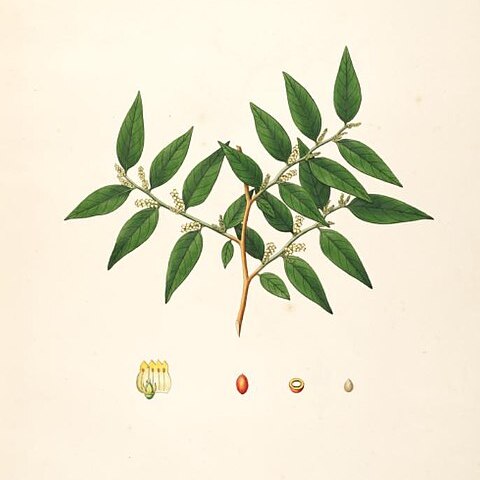Lianes or erect shrubs; young branchlets densely covered with mostly upcurved hairs. Leaves herbaceous to thinly fleshy or coriaceous, glabrous or hairy. Flowers bisexual, in axillary spikes, each flower in axil of small persistent bract; rachis and bracts densely hairy. Perianth urceolate or campanulate with 4 small, recurved lobes, rarely 5-lobed, pilose. Stamens not exceeding perianth-tube. Disc lobed, the ± fleshy scales alternating with the stamens. Ovary ovoid to cylindrical; style short, not or hardly exceeding perianth-tube; stigma capitate, tending to be 4-lobed. Drupe ellipsoidal to ± globular, glabrous, sessile on persistent lacerated perianth; endocarp thin, brittle. Embryo much shorter than seed, with 3 or 4 cotyledons.
Lianas or shrubs. Spikes axillary; bracts small, persistent. Flowers bisexual, 1 per bract. Perianth urceolate or campanulate, 4(or 5)-lobed, pilose. Filaments filiform. Disk scales alternate with stamens. Ovary ovoid or cylindric. Style short, hardly exceeding the perianth tube. Drupe mesocarp fleshy; endocarp thin; embryo with 3 or 4 cotyledons.

